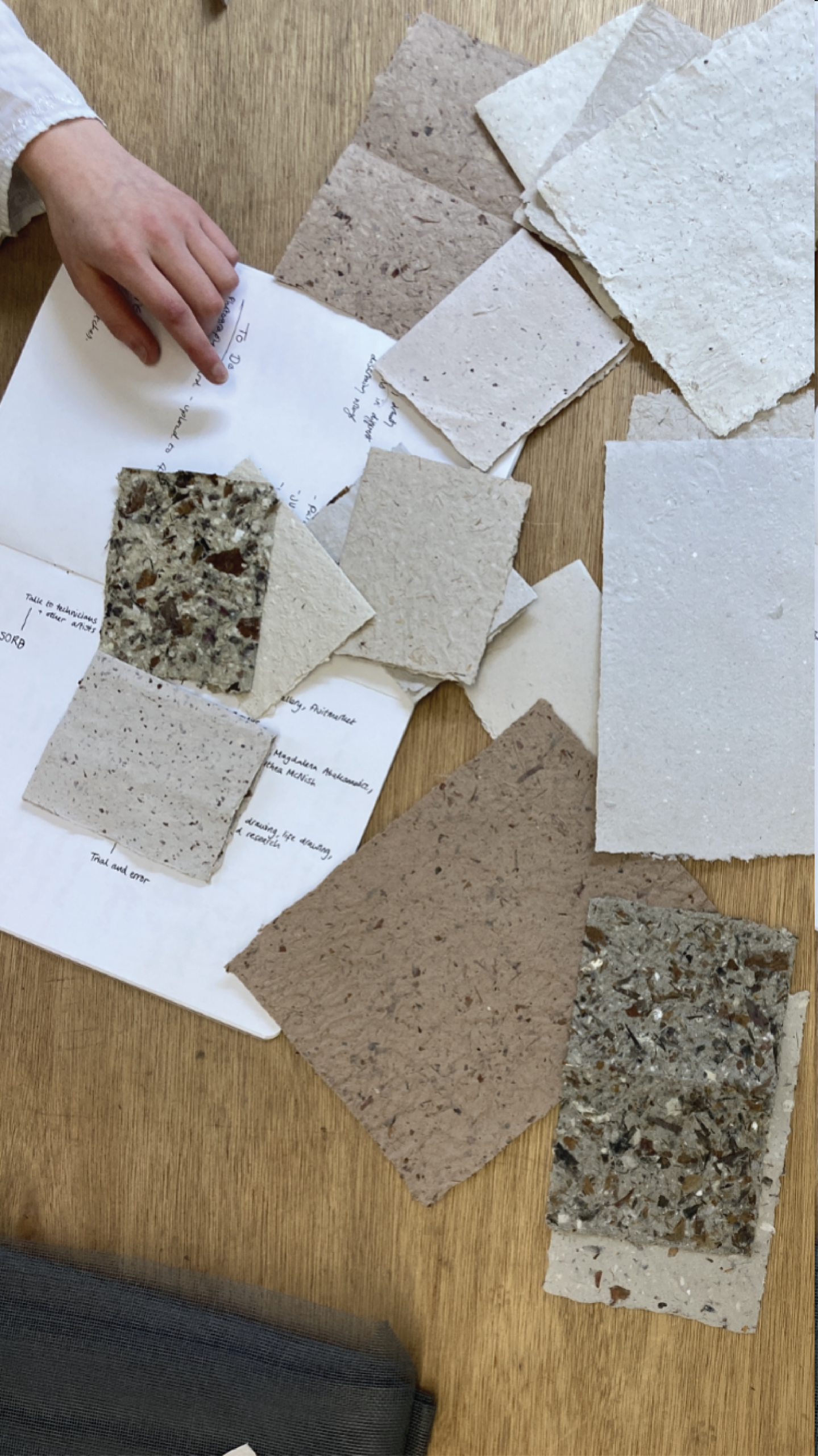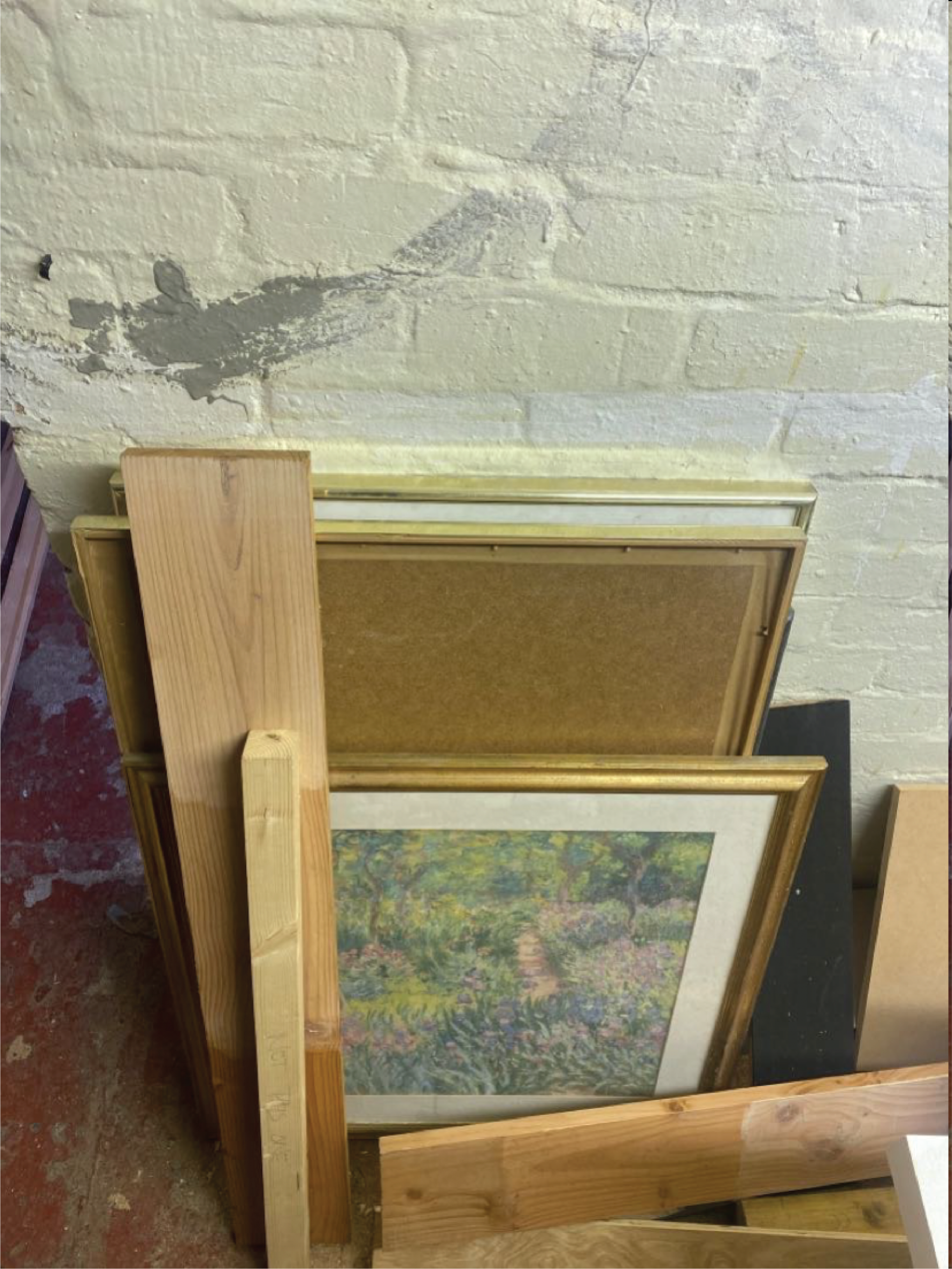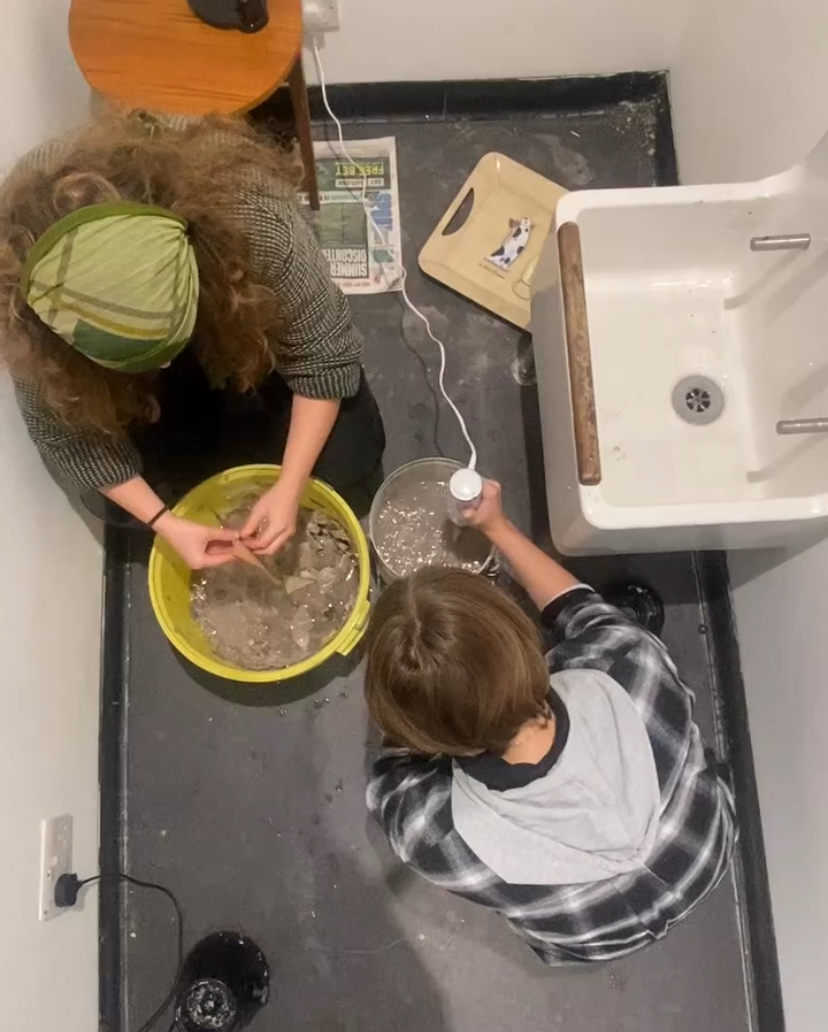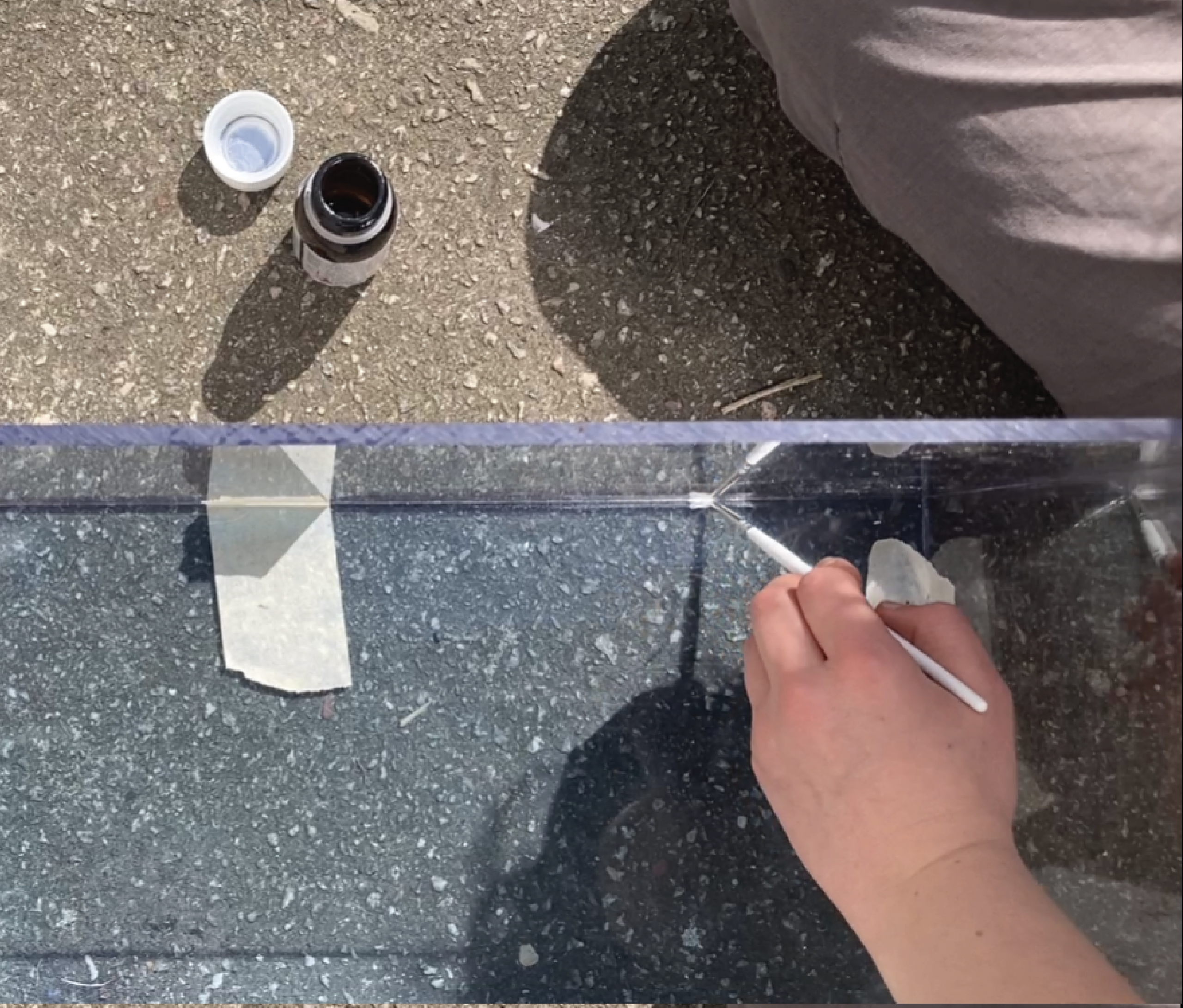
“Everyone has a desire to create, even if they say they’re not an artist.”
This is a transcript from an interview in December 2024 between Arley Stuffins and Tilda Bull, our workshop and events leader. Enjoy!
A: Hello Matilda.
M: Hello Arley.
A: We’re gonna start with the basic introductions about you as a scavenger. So, what materials are you usually working with? And what’s your favourite? Tell us a bit about that.
M: My practice is quite varied; I dabble in a lot of things. But I’d say the revolving and encompassing theme is just using the things I find around me. It’s just that I’m a bit of a hoarder and I hate throwing things away. So it’s just me thinking of ways I can repurpose things in my life.
A: Yeah, with papermaking being quite a big part of your practice, and repairing clothes as well.
M: Yeah I got into papermaking because as an illustrator, doing so many sketches and life drawing- you end up with stacks and stacks of paper and nothing to do with it.
A:Make more!
M: Exactly! And with Delan being an architect, the amount of paper that man was producing. We were thinking ‘what can we do with it all?’ Make more! Print on it. Once you’re done, rip it up again, make more paper!
A: It’s got a nice quality to it as well, the finished paper: a little rough and ready. Nice to draw on?
M: Yeah! I’ve been perfecting my recipe. When I first started it was a bit too absorbent, but I put in a bit of starch and sorted that out.
A: Is that what we’re settling on for favourite material then? Homemade paper?
M:Yeah, that or I love a bit of MDF. It’s got a soft spot in my heart. Also MDF comes pre-reused, made of reconstituted scrap wood. Big fan. Find it on the side of the road, carve a little design, Bob’s your uncle.
A: Well that leads us well into our second question. Challenging the normal life cycle of materials that you get in industry, where they generate a huge amount of waste, and single use products. What makes second hand materials special to you? Where do you find them?
M: Oooh. It’s not something I consciously think about. I’ve grown up in a household where my mum and my granny both refuse to throw anything away so I think maybe it’s genetic.
A: My Grandpa had a similar thing of keeping a smaller milk bottle and decanting from the larger milk bottle into the smaller one, that he’d wash 3 times every time he reused it. Keeping old spatulas and tying them round pieces of string. Rationing isn’t it, wartime mindset.
M: You’d think we were still rationing with how my mum behaves. She makes rugs from our old pants and socks. She makes beautiful designs- you wouldn’t know it was my pants.
A: But now I know, and everyone knows 😮
And where do you find the materials?
M: Just anywhere and everywhere.
A: You seem to attract them
M: Yeah they just fall into my hands
A: Do you ever go skip diving?
M: Occasionally, but I think there’s almost too much choice in a skip. I already have a lot of stuff- I don’t have space for skip sized objects in my life. My current room size does not permit that.
A: How did you first get involved with ScavCo? How did you hear about them?
M: I’d been seeing what the ScavCo gang were up to on the interwebs, and then Arley recommended me to them as a papermaking messiah. We spent quite a long time building a whole set up. Building a tank from old covid perspex screens, and moulds and deckles from old picture frames. Usually DIY papermaking is on a small scale, but we were trying to make sheets larger than A2 – which took some trial and error. It took lots of perfecting to get a nice, even piece of paper. There were lots of sheets that never made the cut, never made it off the mesh.
A: It’s interesting thinking about how you reused the Covid screens for the tank – I wonder how much research has been done into the actual material use during Covid. Umpteen screens were made, now they’re sitting around catching dust.
A: Linking back to ScavCo, and what’s coming up – let’s hear a bit more about the workshops – about the ones that have been run and then potential future workshops.
M: My first ScavCo workshops were actually FOR other ScavCo members – skill sharing in a way – teaching them how to make the paper, so that they, too could lead papermaking workshops. We ran a workshop week during august – we had papermaking, printmaking, paper weaving, and visible mending. They were drop-in workshops, and we got lots of walk-in traffic from the street, people poking their heads in to get in on the fun. We got a real range of people, from kids to elderly. My favourite are the people that proclaim they’re in a hurry, and can’t stay long – but 2 hours later they’re still intricately working on a masterpiece. It’s what makes me love running workshops – people are so interested and receptive- so grateful for having space to make. I miss it!
That leads on nicely… We’re hoping to start a workshop series, on a monthly basis. We want to teach valuable skills, teaching how to reuse things people already own. Things to have a life of their own.
A: A smaller, more practical thing, that can be easy for people to rattle off with things they have, doesn’t require any complex or heavy duty tool use.
M: Accessible making.
A: It would also be interesting to hear – What shaped your artistic vision? Who are your influences?
M: My main influences are always going to be my mum and my granny – my granny is incredible, the type who would survive an apocalypse – she eats roadkill and shit.
A: THE Scavenger
M: Once we were at the beach, out for a late night swim – and this shoal of fish had been chased into the bay by some larger fish i suppose – and suddenly there were fish fucking everywhere, thrashing in the water around us. Lots of them had become stranded along the beach, flopping on the sand – and all the other beach goers were valiantly throwing them back into the sea. Out comes my granny with a bucket, and starts collecting them, smashing their heads with a rock – then we had them for breakfast the next day. Maybe that’s where I get my scavenging instincts from. Back to more artistic thoughts – she’s also an incredible textile artist- spinning and weaving rugs. She’s very resourceful.
A: Tell me a bit more about your interests and advocacy outwith ScavCo. What issues lay close to your heart?
M: Most of my work is political in some sense. I make work that aligns with my personal values, oftentimes becoming political or environmental. Within that, the material I work with is dictated by what I find around me. Printing posters about strikes with MDF I found on the side of the road, running workshops using milk cartons and a pasta maker.
I feel strongly about arts accessibility and how the art world can often feel like an impenetrable little society we’re not allowed into. Anyone can make! It’s not that deep, humans are made to use our hands! Everyone has a desire to create, even if they say they’re not an artist.
When I lead workshops I try to provide a really clear materials list, and use things that would be easy to source – I’m always thinking how
people could replicate it at home. And it’s wonderful to receive messages from people actually going away and doing it for themselves!
A:Make! Make! Make!
“A lot of people who come into the workshops say ‘I’m not creative, I couldn’t possibly…’ Then they come out with the most beautiful creations! “
A: Moving forward into the next stage of ScavCo, what are you excited for?
M: I’m excited to get back into leading workshops, I’ve really missed it. As soon as I put on a workshop, I want to do them all the time! It’s so energising – I learn so much every time from the people who attend. I’m looking forward to creating this space. Also making more myself – I’ve got a bit out of practice, and setting aside the time to just… make! I’m seeing the importance of finding the time, and not feeling like I should be doing something else.
A: Making for the purpose of making.
M: It’s not about the product, it’s about the process of making.
A: it’s nice to hear about your workshop philosophy, and bringing it to a wider audience of people who maybe haven’t thought about making in this way before.
M: Yeah! A lot of people who come into the workshops say – I’m not creative… I couldn’t possibly…Then they come out with the most beautiful creations! I’ve been missing the beautiful quiet of a group of people working away – letting their hands take over.
A: This is for people new to ScavCo, how would you start out scavenging? Any words of wisdom or sage advice?
M: Just be a hoarder haha never throw anything away and eventually things will find their place! No, that’s terrible advice… I think just look at your surroundings, always see potential in the materials around you. For me it’s also about convenience, I hate spending money on unnecessary things, if I can find it around me. Arley laughs at me but I carry all my pens and stationary around in a bread bag. It works!

Explore more:
